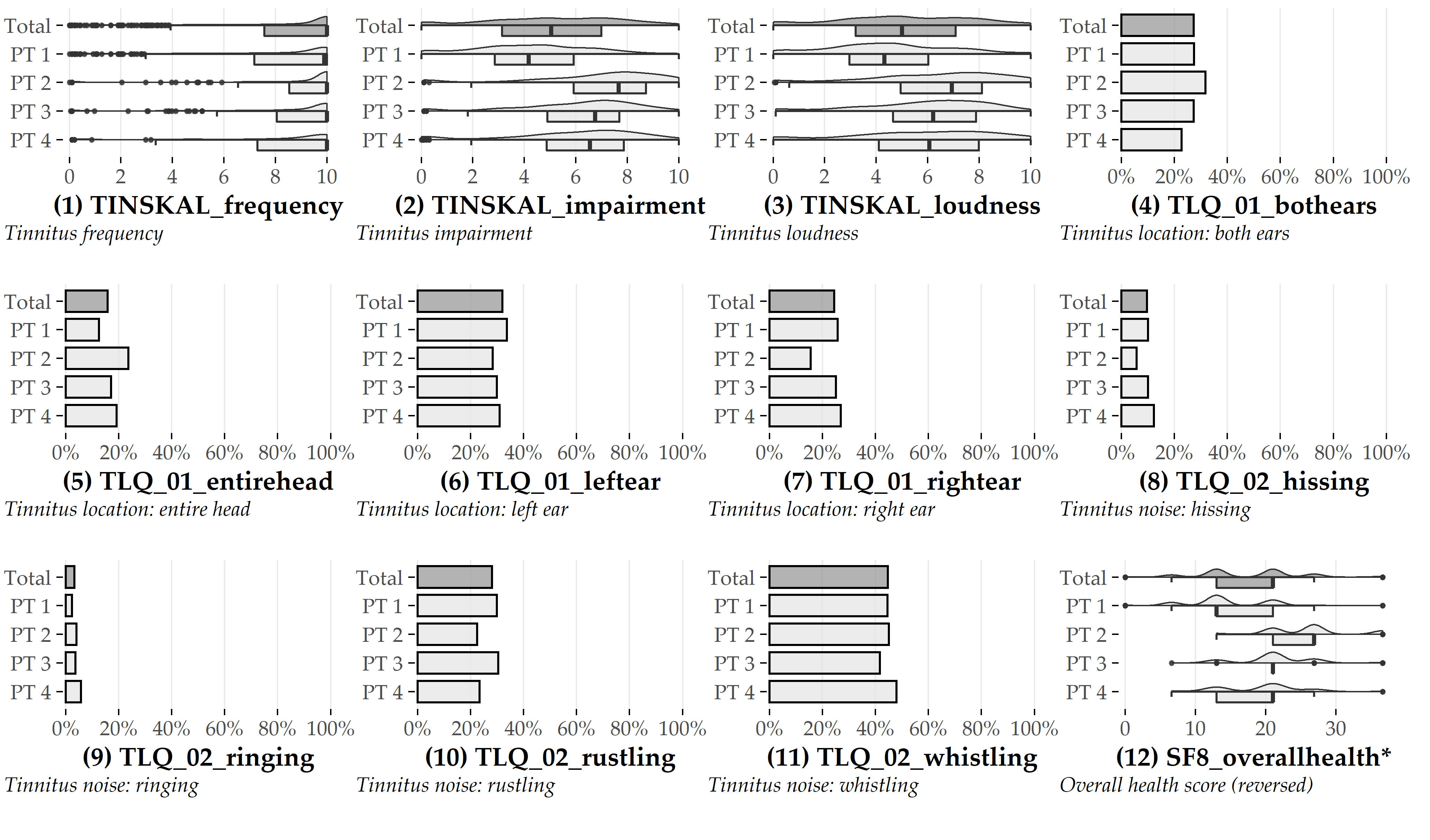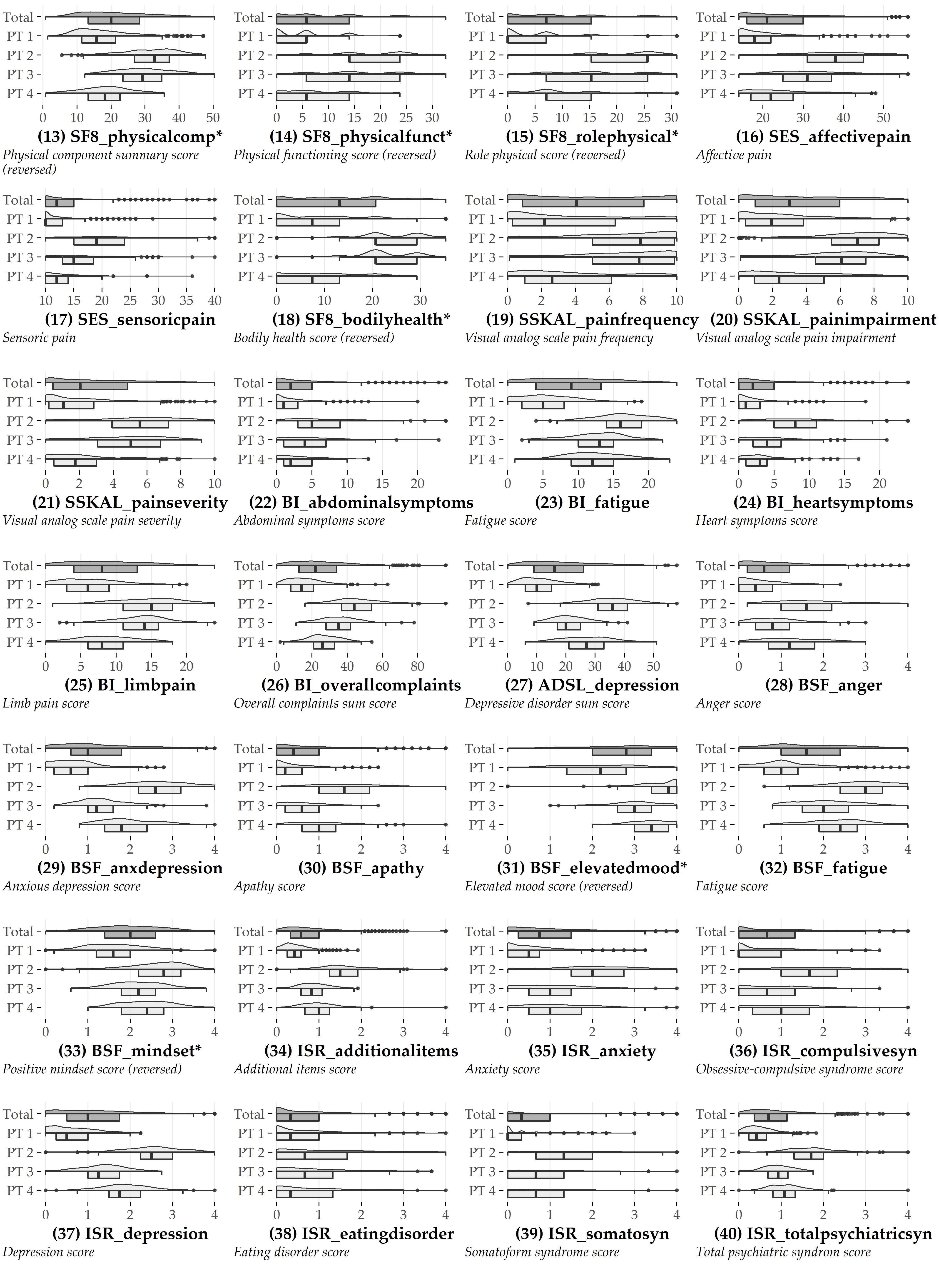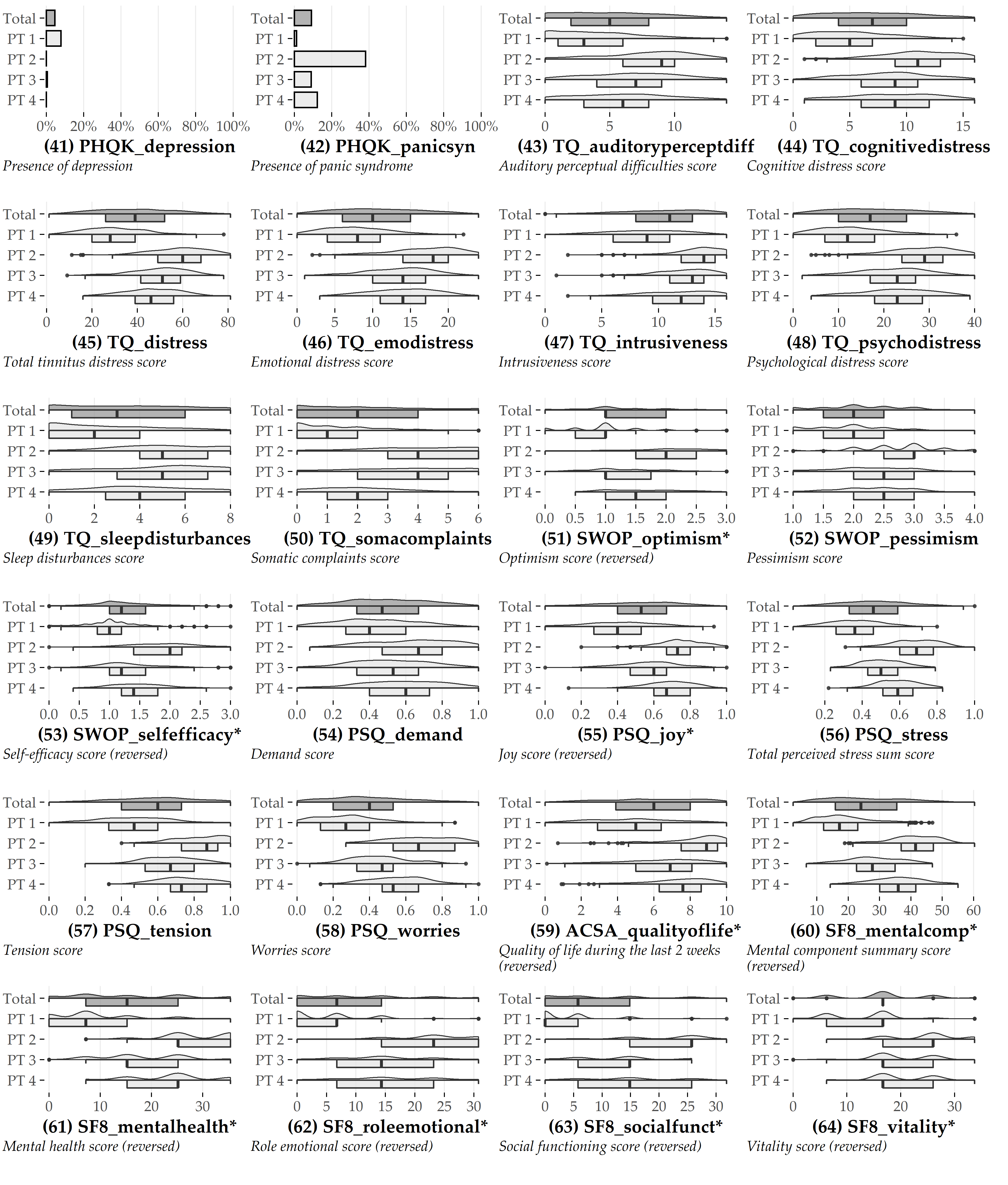A Overview of Variables Selected for Phenotyping
For each of the 64 variables selected for phenotyping in Chapter 5, phenotype-stratified distributions and a brief description are shown below. Half-violin/half-boxplot geometries represent numerical variables; bar graphs represent categorical variables. The order of the variables is analogous to the clockwise arrangement in Figures 5.2 and 5.3. Variables with an asterisk at the end of their name were reversed to ensure higher scores consistently represent higher health burden across all variables.
The prefix of a variable’s name denotes the respective questionnaire: ACSA: Anamnestic Comparative Self-Assessment [55]; ADSL: General Depression Scale [56], [57]; BI: Berlin Complaint Inventory [58]; BSF: Berlin Mood Questionnaire [59]; ISR: ICD-10 Symptom Rating [60]; PHQK: (Short-form) Patient Health Questionnaire [61]; PSQ: Perceived Stress Questionnaire [62]; SES: Pain Perception Scale [63]; SF8: Short Form 8 Health Survey [64]; SOZK: A socio-demographics questionnaire [65]; SWOP: Self-Efficacy- Optimism-Pessimism Scale questionnaire [66]; TINSKAL: Visual analog scales; TLQ: Tinnitus Localization and Quality questionnaire [67]; TQ: Tinnitus Questionnaire (German version) [68].


